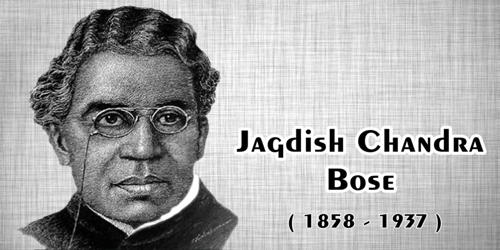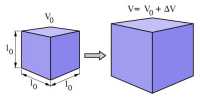Acharya Sir Jagdish Chandra Bose was a physicist as well as a biologist. In our sub-continent, he is the first internationally recommend scientist. He was a pioneer in many areas, contributing greatly to physics, biology, botany, archaeology, and perhaps surprisingly, science fiction. He has contributed a lot to the society but out of all that, his major contribution is the proof that he gave, ‘Plants have feelings’ and the second being in the field of Radio which earned him the title of ‘One of the fathers of Radio Science’ by IEEE.
Bose family hailed from the village Rarikhal of Bikrampur under district of Dhaka. He was born in Mymensingh on 30th November, 1958. His father Bhagawan Chandra Bose was a deputy magistrate in the district of Faridpur. Bose’s education started at a vernacular school in Faridpur. Next, he got admitted to Hare School and Saint Xavier’s school and college in Kolkata and passed his student life. After completing B.A. he went to England for higher study in the year 1880. His student life in England was from 1880 to 1884. He completed the B.A. degree with honours in physics from University of Cambridge and a B. Sc. degree from University of London.
In 1885, he started as a professor of physics at Presidency College. Though there were not adequate facilities of research at Presidency College, he carried out his research work. As there was a scarcity of time in the day, he had to conduct his research work in the night many times. In the laboratory, he researched a lot about, how radio signals can be transmitted to a distant place without the help of wire and succeeded. In 1895, for the first time in history, he sent radio signals to a distant place without wire and demonstrated in public. He has mentionable contributions in micro-wave research. He was the first who was able to reduce the wavelength of the generated wave to the millimeter level (about 5 mm). He was the first to use a semiconductor junction to detect radio signals. Instead of taking commercial benefit from this invention, he opened it for all, so that others can develop this research more.
On May 10, 1901, scientists from all over the world were gathered at the Royal Society in London. They were all anxiously awaiting the results of an experiment that would potentially change our understanding of plants forever. On this momentous day, he was poised to discover whether or not plants could feel and respond to stimuli in the same way that humans and other animals do. To determine this, Bose had built a new instrument that he called a crescograph to detect very tiny motions within plant tissues. As the other scientists watched, Bose demonstrated that the plant responded by moving when part of it was placed in a poisonous solution. This was the first evidence that plants could respond to external stimuli just like other living things. Bose would go on to demonstrate that plants were able to respond to a variety of stimuli, including light, fertilizer, and various poisons and toxins.
Subsequently, Jagadish Chandra Bose made a number of important and pioneering discoveries in plant physiology. Among these, the invention of crescograph to record the growth of plants, extremely slight movement, and how plants respond to various stimuli are notable. His major contribution in the field of biophysics is the nature of conduction of the stimuli in plants. Earlier it was thought that the nature of the response of plants to different stimuli is chemical, but he became able to show that it is electric in nature.
In 1917 he established ‘Bose Biggan Mandir’ in Kolkata in order to research about plant physiology. His writings in the Bengali language are compiled in a book named `Abyakta’. ‘Response in the Living and Non-Living’ is a mentionable book of him. In his lifetime, he made major contributions not only to the study of plants, but also to radio science, physics, and archaeology. Jagadish Chandra Bose expired dated on 23m November 1937.













